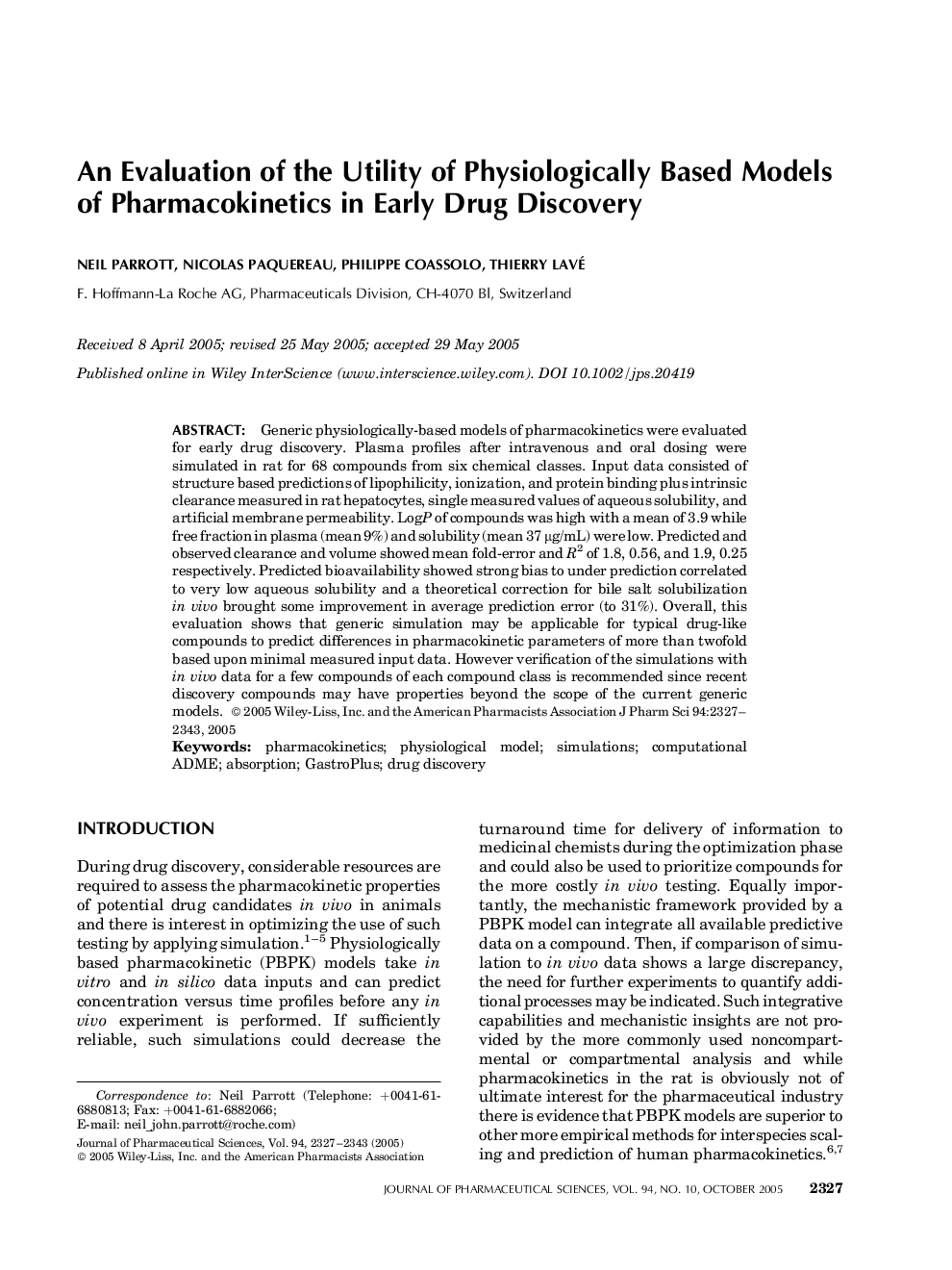| Article ID | Journal | Published Year | Pages | File Type |
|---|---|---|---|---|
| 2486531 | Journal of Pharmaceutical Sciences | 2005 | 17 Pages |
Abstract
Generic physiologically-based models of pharmacokinetics were evaluated for early drug discovery. Plasma profiles after intravenous and oral dosing were simulated in rat for 68 compounds from six chemical classes. Input data consisted of structure based predictions of lipophilicity, ionization, and protein binding plus intrinsic clearance measured in rat hepatocytes, single measured values of aqueous solubility, and artificial membrane permeability. LogP of compounds was high with a mean of 3.9 while free fraction in plasma (mean 9%) and solubility (mean 37 µg/mL) were low. Predicted and observed clearance and volume showed mean fold-error and R2 of 1.8, 0.56, and 1.9, 0.25 respectively. Predicted bioavailability showed strong bias to under prediction correlated to very low aqueous solubility and a theoretical correction for bile salt solubilization in vivo brought some improvement in average prediction error (to 31%). Overall, this evaluation shows that generic simulation may be applicable for typical drug-like compounds to predict differences in pharmacokinetic parameters of more than twofold based upon minimal measured input data. However verification of the simulations with in vivo data for a few compounds of each compound class is recommended since recent discovery compounds may have properties beyond the scope of the current generic models. © 2005 Wiley-Liss, Inc. and the American Pharmacists Association
Keywords
Related Topics
Health Sciences
Pharmacology, Toxicology and Pharmaceutical Science
Drug Discovery
Authors
Neil Parrott, Nicolas Paquereau, Philippe Coassolo, Thierry Lavé,
